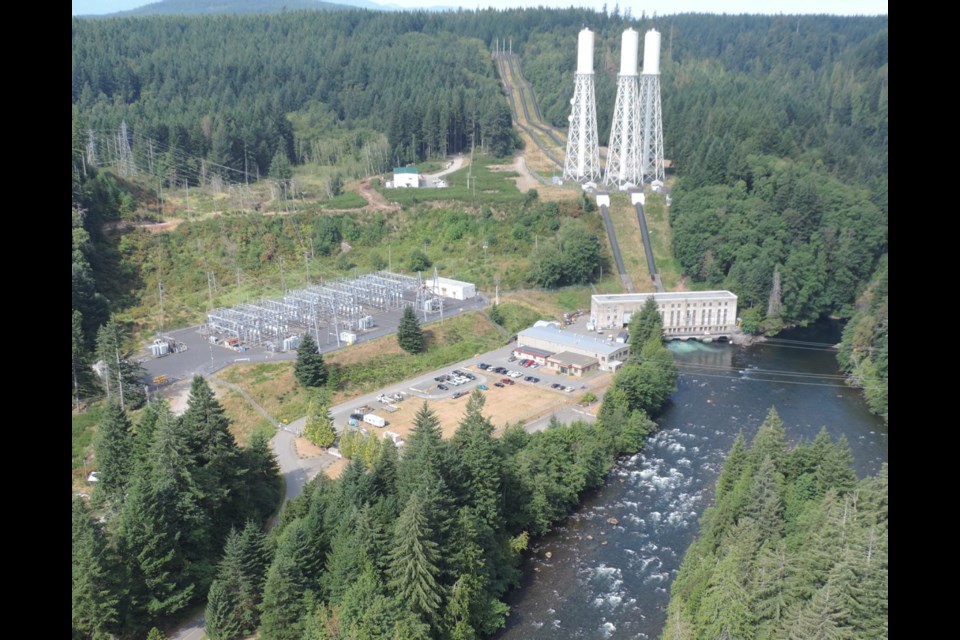Campbell River is starting to hum again as it gears up for massive construction projects that will inject new life into the economy for years.
Back in 2011, the street outside the Quay West Kitchen was quiet and not much was happening, said Debra Cunningham, co-owner with Marc McGraw.
The scene is different today. “It’s busy. There’s lots of buzz in Campbell River and it plays over into our restaurant,” she said Friday.
Cunningham took the initiative to meet businesses and offer gift cards to promote both the restaurant and its catering service. Sales have climbed monthly this year, she said.
Colleen Evans, Campbell River and District Chamber of Commerce president, said the community has a “whole new feeling of optimism, of the future, of opportunity.”
Strategies are being developed to respond to the anticipated influx of money and workers flowing from B.C. Hydro’s $1-billion John Hart generating station and Island Health hospital projects totalling $600 million.
Campbell River is getting ready for rapid growth, Evans said.
Like other coastal communities, Campbell River was hammered in recent decades by a downturn in fishing and forestry industries. Its pulp mill closed for good in 2010. A cruise ship port failed to attract a steady stream of vessels.
But now, phone calls are coming in regularly from workers who want to move to the city, Evans said. Many displaced workers left the community for jobs in northern B.C. and Alberta, she said. The task is to bring them back to the community of 36,000.
The John Hart replacement project will get underway next year, providing 400 jobs during its five-year construction period.
Construction of the $266-million, 95-bed Campbell River hospital will start in 2014, and a Comox Valley hospital costing $344 million is also being built. Hospital construction will generate 1,900 direct and 1,400 indirect jobs by the time they are finished in 2017, Island Health said.
New offices and housing — to help provide accommodation for the workers — are under construction in Campbell River, Evans said. Quicksilver Resources Canada Inc. bought the old mill and is looking at developing a natural gas liquefaction, storage and loading facility.
A two-day open house, to be held in December or January, will serve businesses and workers interested in the opportunities. An online job fair will aim to provide information and links for potential workers.
On Oct. 22, the chamber will play host to a Business Expo. Education workshops for businesses are also planned, with the first to be held next month.
The chamber was among 11 similar organizations sharing $1.4 million in funding this year from the Employer Innovation Fund to help develop initiatives and resources to attract and integrate skilled immigrants into B.C. workplaces.
Greg Baynton, president of the Vancouver Island Construction Association, said the challenge is to find enough trained workers for these projects as baby boomers retire.
John Hart, two hospitals and other major Island projects will all be underway at the same time, he said. “It’s going to exacerbate the skill shortage, the cost of construction, all those kinds of things.”
Baynton expects wages to increase as employers compete for workers.
The preferred builder for the hospitals is expected to be identified by December, followed by a final contract.
Construction is to start in April, Island Health said Friday.
Hydro is evaluating submissions from three short-listed teams seeking the job of general contractor. The preferred contractor should be announced late this month or early in November, and the contract is expected to be signed by year’s end, B.C. Hydro spokesman Stephen Watson said.
Already, 40 workers are on the job preparing the John Hart site and are also renovating downtown office space. The 50 workers at the old generating station will be moving into town during the construction phase, Watson said.
Hydro is also spending $23 million for a new 28,000-square-foot district office for 45 staff that will carry out work related to power lines. That project will be finished in 2015 and has created another 60 construction jobs, Watson said.
For information, see majorprojects.ca.



